Life under Romania’s communist regime was a far cry from the utopian vision sold to the masses. Citizens endured severe shortages, oppressive state control, and a climate of fear and suspicion. Obtaining even basic necessities meant navigating tangled bureaucracies and waiting in endless queues. Leisure activities were tightly regulated, with the state promoting ideologically-aligned events. Dissent was swiftly punished, as the regime sought to maintain its iron grip on power. Yet, beneath the surface, a longing for freedom and dignity simmered, waiting to erupt. What led to the rise of this repressive system, and how did it shape the lived experiences of ordinary Romanians? Exploring the realities of communist rule provides a window into a complex and turbulent era.
Key Points
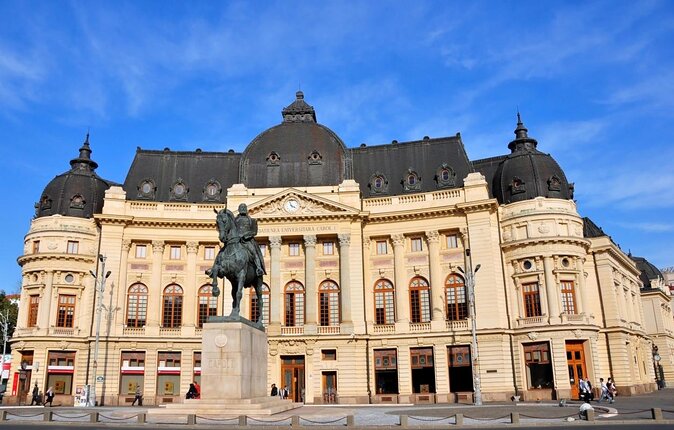
- Severe shortages of basic consumer goods, requiring lengthy queuing and rationing to obtain even essential items.
- Pervasive state control over information, media, and public discourse, limiting access to independent sources of news and ideas.
- Intrusive government monitoring and punishment for any perceived non-conformity or opposition to the regime’s policies and ideological narrative.
- Limited leisure activities, with the state promoting collective, ideologically-aligned events while restricting personal freedoms and private initiatives.
- Navigating a complex bureaucracy and obtaining proper documentation for even mundane tasks, as the state exerted tight control over citizens’ lives.
Ceaușescu’s Rise to Power
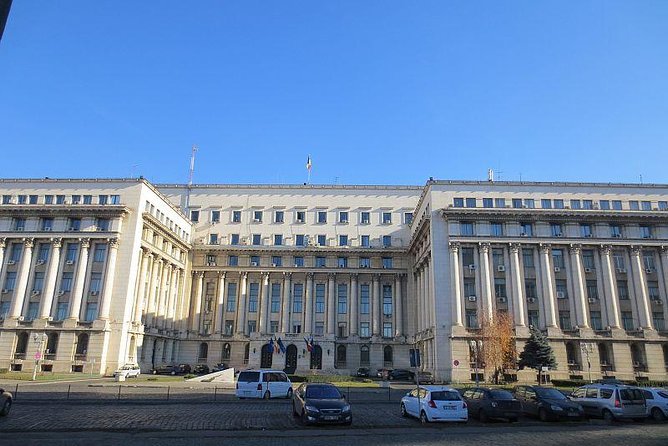
Though Nicolae Ceaușescu’s rise to power was gradual, his authoritarian ambitions were evident from an early stage. As a member of the Romanian Communist Party, he steadily climbed the ranks, exploiting political turmoil and purges to consolidate his control over the government.
Ceaușescu skillfully maneuvered to remove his rivals, including the former leader Gheorghe Gheorghiu-Dej. Once in power, he demanded absolute loyalty and brooked no opposition, transforming Romania into a repressive police state.
Ceaușescu’s cult of personality, along with his lavish spending on grandiose projects, further entrenched his grip on power, even as living standards for ordinary Romanians plummeted.
It would take a popular uprising in 1989 to finally overthrow the dictator and his regime.
You can also read our reviews of more tours and experiences in Bucharest.
Distinctive Architectural Legacy
The distinctive architectural legacy of Ceaușescu’s Romania is evident throughout Bucharest, with numerous landmarks reflecting the regime’s penchant for grandiose, imposing structures.
From the massive Palace of the Parliament to the austere, utilitarian apartment blocks, the built environment of the capital city bears the imprint of the Communist dictator’s vision.
These structures were designed to project power and conformity, with little regard for human scale or individual expression.
The vast, symmetrical boulevards and monumental public buildings were intended to awe and intimidate, a physical manifestation of the regime’s totalitarian control.
This architectural style continues to shape the urban landscape of Bucharest, serving as a tangible reminder of Romania’s Communist past.
Daily Life Routines

Under Communist rule, citizens endured a tightly regimented daily routine marked by scarcity and surveillance.
Access to basic consumer goods was severely limited, forcing people to queue for hours to obtain food, clothing, and other essentials.
The state strictly controlled the flow of information, with the media and public discourse heavily censored to align with the regime’s propaganda.
Mundane tasks like grocery shopping or visiting the doctor required navigating a web of bureaucracy and obtaining the proper documentation.
Leisure activities were limited, with the government promoting collective activities like sports and cultural events that reinforced the Communist ideology.
Daily life was permeated by the fear of being monitored and the ever-present possibility of punishment for non-conformity.
Political Memorials and Sites
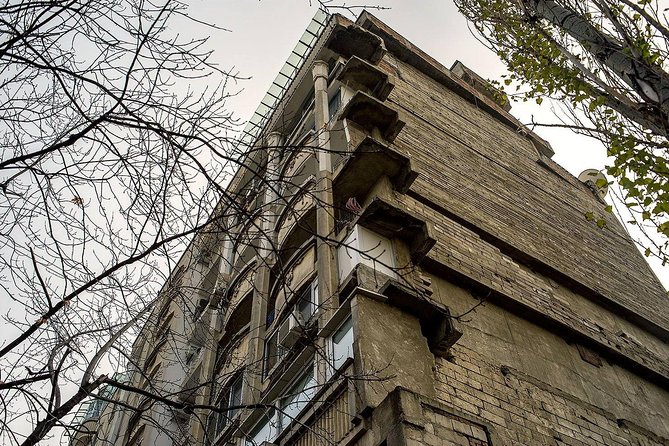
Visitors to Bucharest exploring the remnants of Communist rule often encounter a sobering array of political memorials and sites that bear witness to the regime’s oppressive legacy.
One such landmark is the Memorial of Rebirth, a striking sculptural monument commemorating the 1989 revolution that toppled dictator Nicolae Ceausescu.
Nearby, Revolution Square serves as a poignant reminder of the violence and turmoil that marked the end of Communist rule, with bullet holes and plaques honoring those who lost their lives.
Other sites, like the Palace of the Parliament, stand as imposing symbols of the party’s totalitarian ambitions.
These haunting remnants provide powerful insight into Romania’s difficult past and the struggle for freedom.
1989 Romanian Revolution

Although the 1989 Romanian Revolution was a pivotal moment that toppled the Communist regime, its causes and aftermath remain complex.
The events that unfolded in December of that year, sparked by public unrest and government crackdowns, ultimately led to the execution of dictator Nicolae Ceaușescu and the hotel of a new democratic government.
The revolution began with protests in Timișoara and quickly spread to Bucharest, where massive crowds gathered in University Square and Revolution Square to demand change.
The military eventually turned against Ceaușescu, leading to his downfall and the end of the Communist era in Romania.
The transition to democracy wasn’t without its challenges, but the revolution marked a significant shift in the country’s political landscape.
- Draculas Castle, Peles Castle and Brasov Day Trip From Bucharest
- Transylvania and Dracula Castle Full Day Tour From Bucharest
- Small-Group Day Trip to Draculas Castle, Brasov and Peles Castle From Bucharest
- Bohemian Bucharest Markets and Mahallas Traditional Food Tour
- Draculas Castle, Brasov and Peles Full-Day Tour From Bucharest
- The Real Tour of Communism
Communism’s Lasting Impacts
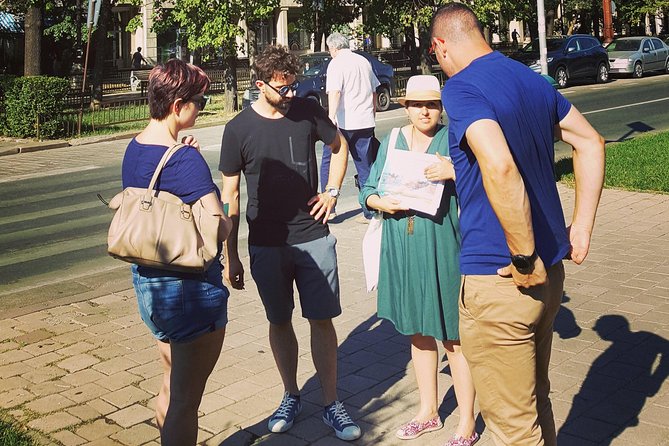
The legacy of communism continues to shape Romania’s society and economy today. Despite the fall of the Ceaușescu regime, the impacts of decades of authoritarian rule linger, from the country’s infrastructure to the mindsets of its people.
Many buildings and public spaces still bear the unmistakable stamp of communist architecture, a constant reminder of the past. Plus, Romanians’ skepticism towards government and reluctance to engage in civic life can be traced back to the repressive policies of the former regime.
While progress has been made, overcoming communism’s deep-rooted influence remains an ongoing challenge for the country as it moves forward into the 21st century.
Guided Tour Itinerary
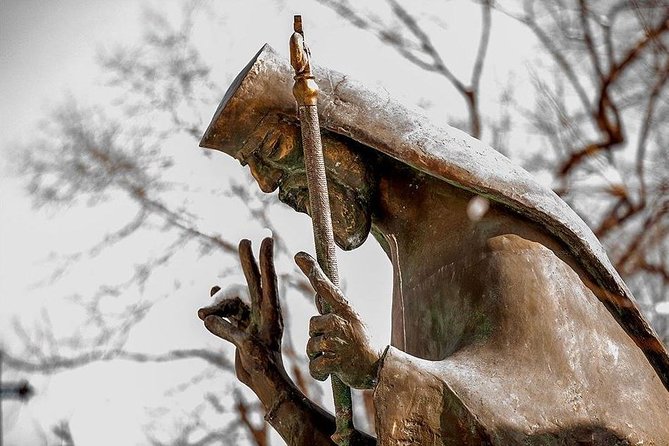
The tour kicks off at the red-brick bell tower of the Patriarchal church, where travelers gather to begin their exploration of Bucharest’s communist past.
From this starting point, the guide leads participants through the city’s streets, pointing out the distinctive architectural hallmarks of the communist era and sharing stories about daily life under the regime.
Along the way, the group visits key political memorials and sites that played a pivotal role in the 1989 revolution, providing insight into the rise and fall of the Ceaușescu dictatorship.
The tour culminates in Revolution Square, where the group can reflect on the lasting impacts of communism on Romania’s history and culture.
Tour Booking Details
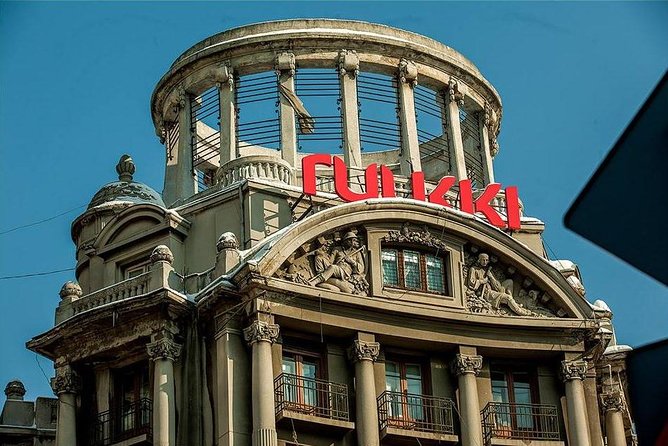
Booking the tour is straightforward, with travelers able to reserve their spot online or by contacting the tour operator directly. Cancellations are permitted up to 24 hours before the scheduled start time for a full refund, though any changes within that window may not be accepted.
The tour operates in all weather conditions, so participants should dress accordingly. While the tour isn’t wheelchair accessible, it’s stroller-friendly, and service animals are allowed.
The meeting point is near the red-brick bell tower of the Patriarchal Church, and the tour concludes at Revolution Square. The price includes a professional guide, but food, drinks, and gratuities aren’t covered, nor is hotel pickup and drop-off.
Frequently Asked Questions
What Was the Role of the Secret Police Under CeaușEscu’s Regime?
The secret police, known as the Securitate, played a crucial role in Ceaușescu’s totalitarian regime. They monitored citizens, suppressed dissent, and conducted surveillance to maintain control and ensure loyalty to the Communist Party’s leadership.
How Did the Government Control the Media and Censor Information?
The government tightly controlled the media, censoring information that was critical of the regime. They owned all TV and radio stations, and strictly monitored newspapers, blocking any content that didn’t align with the Communist party’s propaganda.
What Were the Common Methods Used to Monitor and Suppress Dissent?
The government employed widespread surveillance, censorship, and intimidation to monitor and suppress dissent. They used secret police, informants, and punitive measures to control the population and quash any opposition to the Communist regime.
How Did Romanians Access News and Information From the Outside World?
Romanians had limited access to news and information from the outside world under Communist rule. They relied on smuggled foreign radios, illegal satellite dishes, and word-of-mouth to obtain forbidden details about life beyond Romania’s borders.
What Were the Key Differences Between Urban and Rural Life Under Communism?
In communist Romania, urban and rural life differed significantly. Urban areas were more industrialized, with greater access to consumer goods, while rural regions were largely agricultural, with fewer modern amenities and tighter government control over daily activities.
Recap
The experience of life under Communism in Romania was defined by severe restrictions, state control, and an atmosphere of fear and repression.
Despite the regime’s attempts to maintain absolute power, the 1989 Romanian Revolution ultimately led to the overthrow of the Communist government.
Though the impacts of Communism still linger, guided tours provide an opportunity to explore the country’s distinctive architectural legacy and historical sites related to this tumultuous period.
More Tour Reviews in Bucharest
- Bucharest : Parliament, Village Museum & Ceauescu Mansion
- Small Group Tour to Mogosoaia Palace & Snagov Monastery
- Bucharest: Walking tour with Italian speaking guide for small groups
- Bucharest Tuk Tuk City Tour
- Bucharest: Old Town & Historical Landmark Guided Tour
- Bucharest: Dracula Castle, Peles Castle & Brasov Guided Tour
Not for you? Here's more things to do in Bucharest we have recnetly reviewed
- PREMIUM TOUR SMALL GROUP: Peles&Bran Castles&Brasov Day Trip
- From Bucharest: Bulgaria Private Day Trip with Guide
- Slavery in Romania,Myths and Truths on Gypsies, Walking Tour
- Museums and Galleries walking tour in Bucharest
- PREMIUM TOUR SMALL GROUP Bucharest-Constana: Coastal Escape
- Private tour to Bulgaria : Ivanovo Churches & Veliko Tarnovo
- Therme:Spa Day at the biggest oasis of RelaxationBucharest
- From Bucharest: Dracula’s Castle & Bear Sanctuary Adventure
- Bucharest: Hidden Gems 2.5-Hour Walking Tour
- Communist Museums Marathon: 3 museums and all transfers incl
- Bucharest: Arc de Triomphe & Village Museum Guided Tour
- Bucharest: Custom Souvenir Workshop
